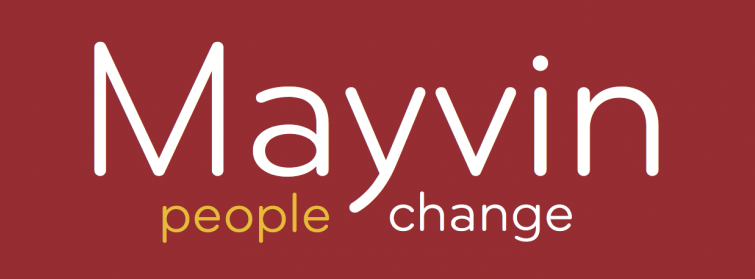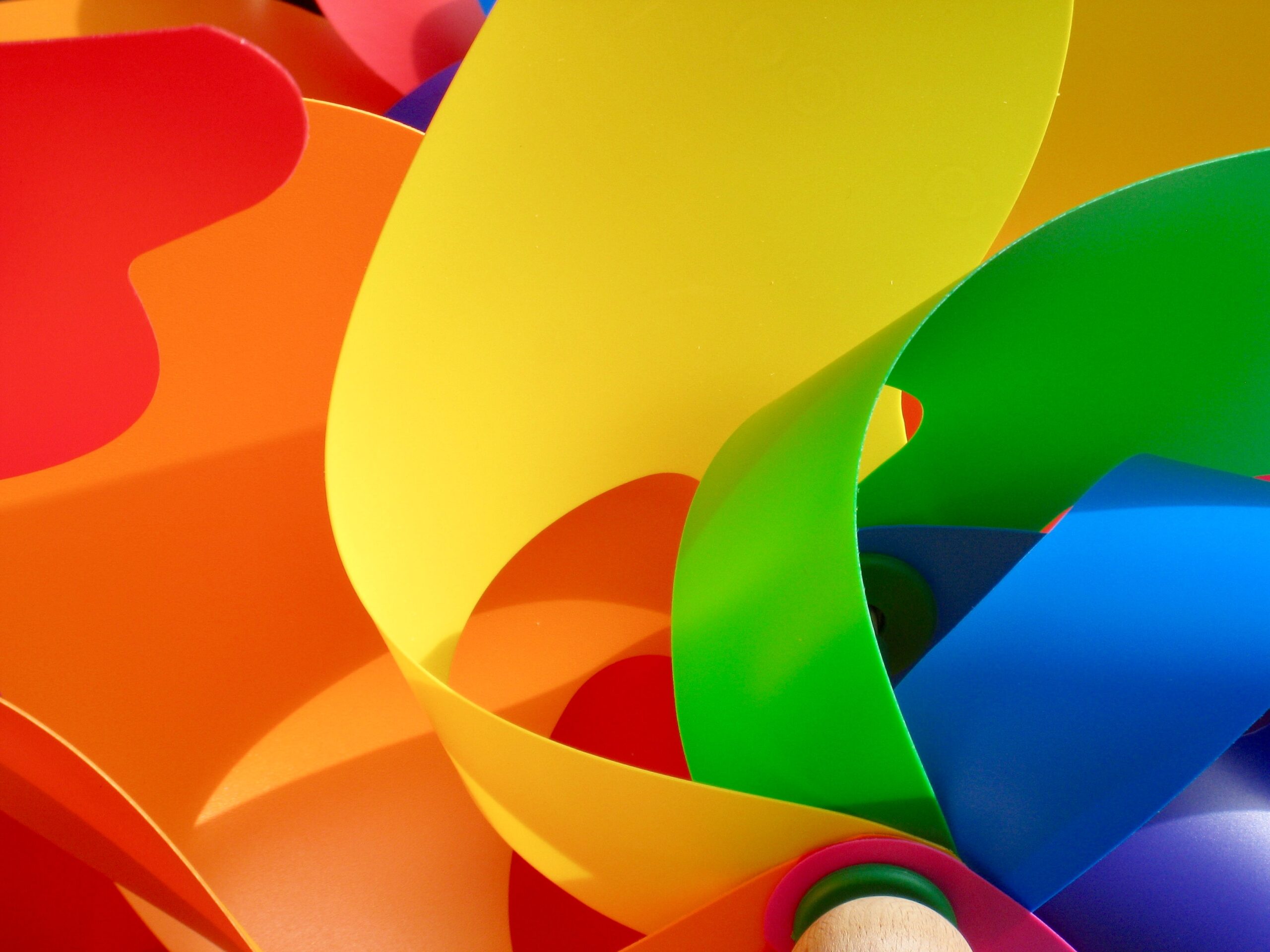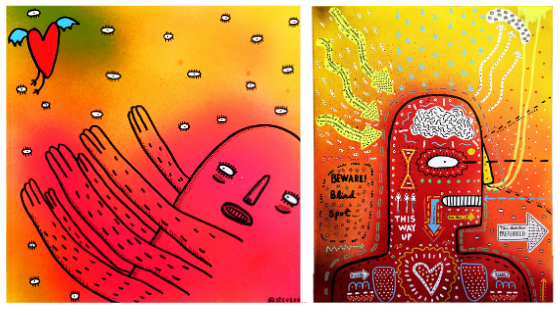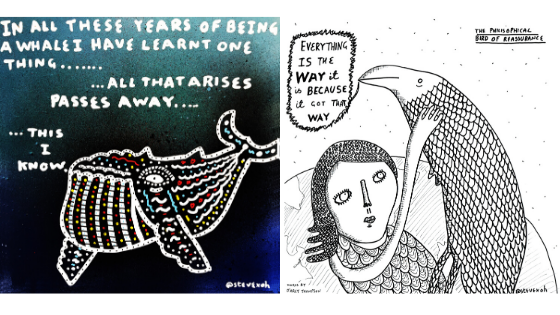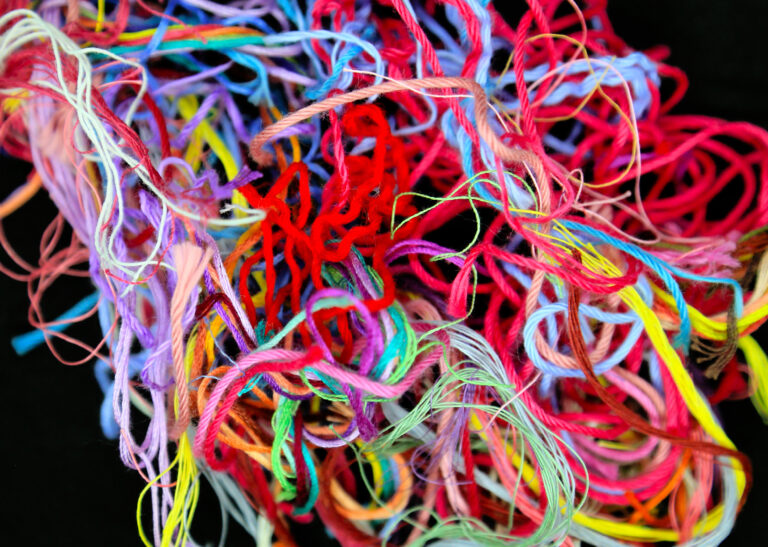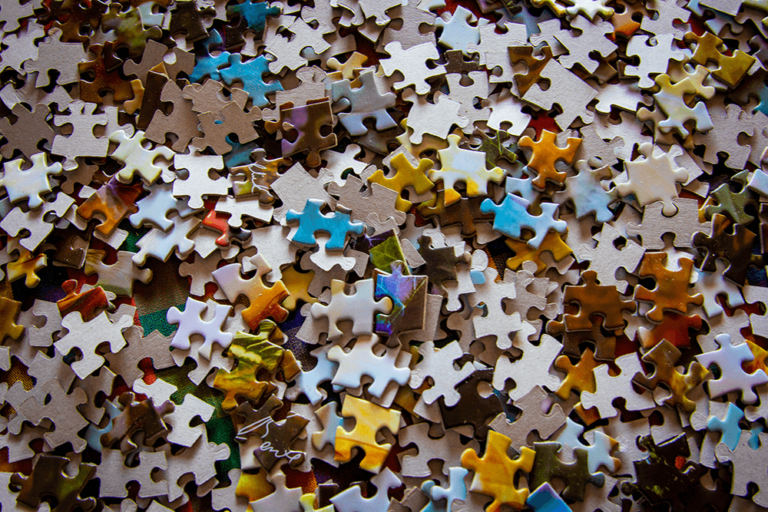Mayvin colleague, Steve Chapman, is an artist, writer, speaker, consultant and coach interested in creativity and the human condition. He has spoken around the world on the subject of creativity, culture and the importance of being a passionate weirdo. He recently co-hosted one of Mayvin's Artful Knowing webinars on The Art of Not Knowing. In this blog, he expands on the thoughts he shared during the webinar on creative practice.
I normally write blogs just about one thing. This is partly because I find that one concept or idea grabs my attention enough for me to dive into it in some depth. But it is also because I have an aversion to blogs entitled “5 things about” or “10 ways to”. It is no doubt an irrational aversion that causes me to miss out on loads of interesting stuff and I appreciate that statistically it has been shown that a blog presented as a numbered list is more likely to be clicked on than one with an abstract title. But I can’t help but think that these numbered lists simply fuel our addiction to quick-fix life hacks. To cut and paste somebody else’s neatly numbered “solution” onto our own unique experience.
These articles seem to imply that if we simply follow the self-assembly instructions we’ll all get the same result which is clearly not true. (You can read my blog post suggesting personal development is less flat-pack-furniture and more scrap-heap challenge.) I say all of this because I fear I am about to be totally hypocritical and write a list!
I never really thought much about my creative practice in terms of what it is that I do that results in the outputs I generate – artwork, projects, social experiments etc. But when I was invited to be the guest on the Mayvin Artful Knowing webinar I paused for a moment and wondered what it was that enabled me to generate this stuff. What practices do I practice without necessarily knowing I practice them? What conditions or ways of thinking and being better allow me to creatively lose myself in something?
Over the few days before the webinar, I scribbled down a few ideas, a few practices or philosophies as they came to me. Before I knew it I had eight little artefact cards with headings on them that looked dangerously like a list from one of those dreaded articles! I shared these cards, in no particular order, on the webinar as a way of giving an insight into the conditions that enable to be in my creative sweet spot and they provoked some interesting thoughts, questions and ideas for those who attended.
On speaking with James Traeger after the session, I agreed that I would confront my aversion to list-like blogs and write something about these practices for those who are interested. A description of how I seem to find creative flow in which I am able to do my best thinking. But by no means as any sort of recipe that anyone ought or should follow to achieve anything in particular. A tapas of thoughts to pick at and see if there are any bits you like.
Everything is practice
For me, everything is creative practice. Be that sitting down to make something, going for a run, walking the dog, running a workshop, coaching somebody, giving a talk, working with my therapist, writing this blog. I don’t intentionally have a divide or a boundary where I think this is now my creative practice and this is not. Nor do I really have any concept of a work-life balance in the traditional sense. It just all feels like the same flow of experiencing, noticing and experimenting. A single ongoing flow of improvising with what is. (I suppose the closest thing to the traditional concept of work/life I have is that some stuff I get paid for, some I don’t).
I realise that I never intentionally set out to dissolve these boundaries in this way. It seems it has been a gradual shift over the years as I let go of many of the traditional ways of being I had adopted simply because they were the things a sensible adult should do. And I have found liberation in this that means I have somewhat freed myself from stuck ‘try-harder’ patterns that are the death knell for creativity. It means that literally everything is an offer, an invitation to make more sense of the present moment rather than seeking inspiration as if it were some elusive, mythical creature that requires an intentional pursuit.
Just for nice
The phrase “just for nice” comes from the Pennsylvanian Dutch and literally means the act of doing something “just for nice”. With no real intention or objective. It is just for nice. (I recently wrote a blog about just for nice that elaborates in more detail) I find the idea of nothing having to be about anything in particular liberating. A freedom in the fact that I am not constrained by the illusion of an objective I have to meet. This seems to be where many organisations get in their own way when trying to transform.
Many people I have worked with 1:1 to explore their creativity seem to get stuck here, holding back because they do not know what this exciting thing they are interested in is for. But as South Korean author Kim Young Ha says
“Devils come to earth, briefly transformed, to stop you from being artistic. And they have a magic question – ‘What for?’ But art is not for anything. Art is the ultimate goal. It saves our souls”.
Doing something just for nice is reason enough to do it.
Intentional unintentionality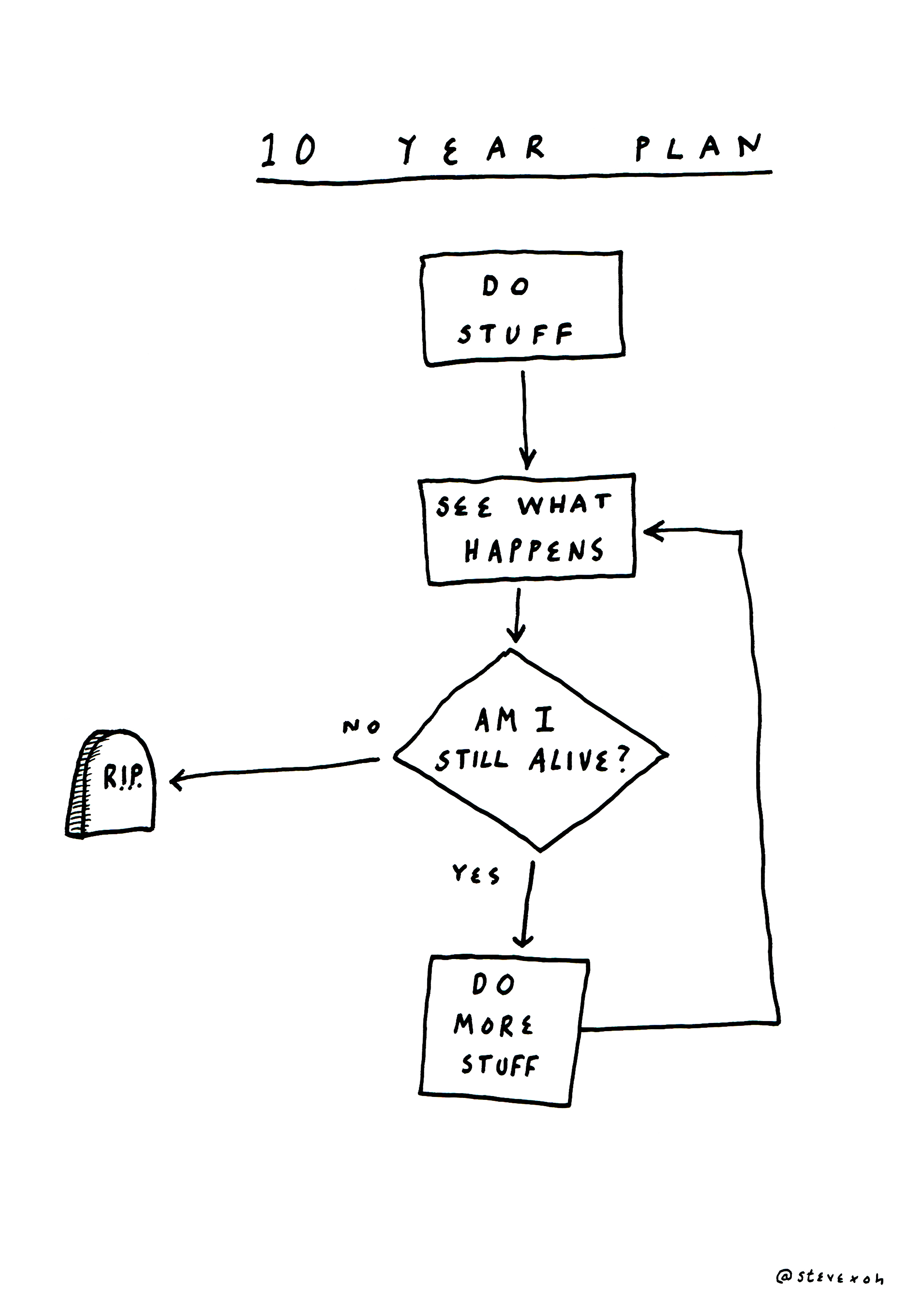
Whilst I allow my practice to not be about anything, in particular, Irealise that I do hold a strong intention to do this - what I likecalling an intentional unintentionality. A practice of striving to intentionally make all I do unintentional. A practice of what is known in Buddhism as passionate non-attachment. I like the brain-ache that this concept provokes in me as I know that the dissonance arising from such paradoxes is fertile ground for creativity.
I started to become aware of this whenever people would commission me to do a piece of art. I’d always love the idea of it and say “yes” but then find myself completely stuck and not want to do it. I realised that this was because the artwork was no longer about discovery, it was about trying to copy the image in my head about the finished product. It was no longer about working out what it was as I went about making it.
So, even though they are probably the most lucrative way to make money through my art, I stopped saying yes to such commissions as I found them not only less joyful but also anxiety-provoking. Now I simply show stuff that I have made to others and they can buy it if they want it which feels so much more relaxing and wholesome for me as it comes from this intentionally unintentional place.
Practice > product
I have become a prolific maker over the years and, during COVID-19 lockdown at least, I make 5-10 pieces of art per day (most of which I share on my Instagram feed). But this output doesn’t come from an objective to produce output. I make purely to experience the process of making. Making is my therapy. It helps me to unwrap the present moment. It allows me to express thoughts or feelings through tactile practices such as pens, paint, clay, music.
Even bigger projects such as the Sound of Silence podcast help me make more sense of the world and my place in it and that is the only reason I do them. This is also why much of what I make I give away for free. As much as I would like to claim it is because of some deeply held philanthropic reasons it is simply because the output isn’t really of any value to me. The output is simply an souvenir of the process. It is similar to finding a shell on a beach. We may see beauty in a shell, a value that we want to hold onto so we put it in our pocket. But the shell is simply an artefact. The output of a now completed process of being a sea creature. The shell is no longer of value to the process that produced it.
When more people became interested in buying my art I consciously decided that I would never make anything with the intention of it being something that I thought people would buy. I experienced this in the past when I began blogging in 2012. I would spend ages crafting a blog that I thought people would love and share with all their friends. These blogs were inevitably of little or no interest to anyone, yet the ones I wrote just for me and almost didn’t share because they were messy, streams of thought were the ones that others found of interest. I believe one of the most important things about creative practice is to make it just for us. Just for you. And if you are willing to share the output with others, somebody somewhere will find beauty in it.
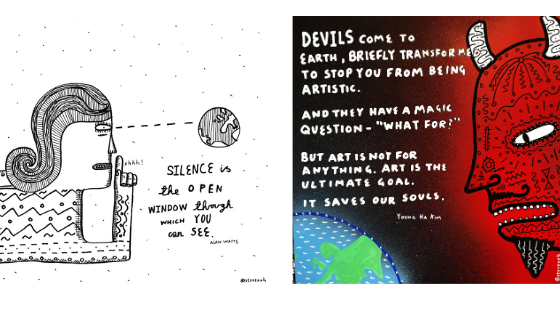
Quantum flirting
I learnt of the concept of Quantum Flirting from my friend and collaborator Simon Cavicchia. It comes from the quantum physicist Arnie Mindell and I understand it as a way of shifting or re-framing our experience of the world. We typically believe that we notice something because we chose to notice it. For example, as I type this I might say that I have chosen to notice the magnolia tree outside my window.
However, Mindell suggests that it is equally possible that, in a moment of quantum flirting, the magnolia tree called for my attention and I was simply open enough in that moment to hear it calling. I use the idea of quantum flirting a lot in my coaching work. If somebody has a stuck question I suggest that they do some quantum flirting. To hold their question lightly in mind and to NOT go looking for the answer but be open to the answer spontaneously presenting itself to them at some point.
I realise I do the same with my creative practice. I know that if I go looking for inspiration, seeking an idea of what to draw, what to write or a new project then I rarely find it. But if I try to maintain the practice of simply being open to inspiration presenting itself to me at some point then it inevitably does. Whilst this means it is always tricky to produce stuff on demand and unpredictable fallow periods, the overall experience feels much more effortless.
The 42-hour sweet spot
Malcolm Gladwell famously wrote about the 10,000 hours of 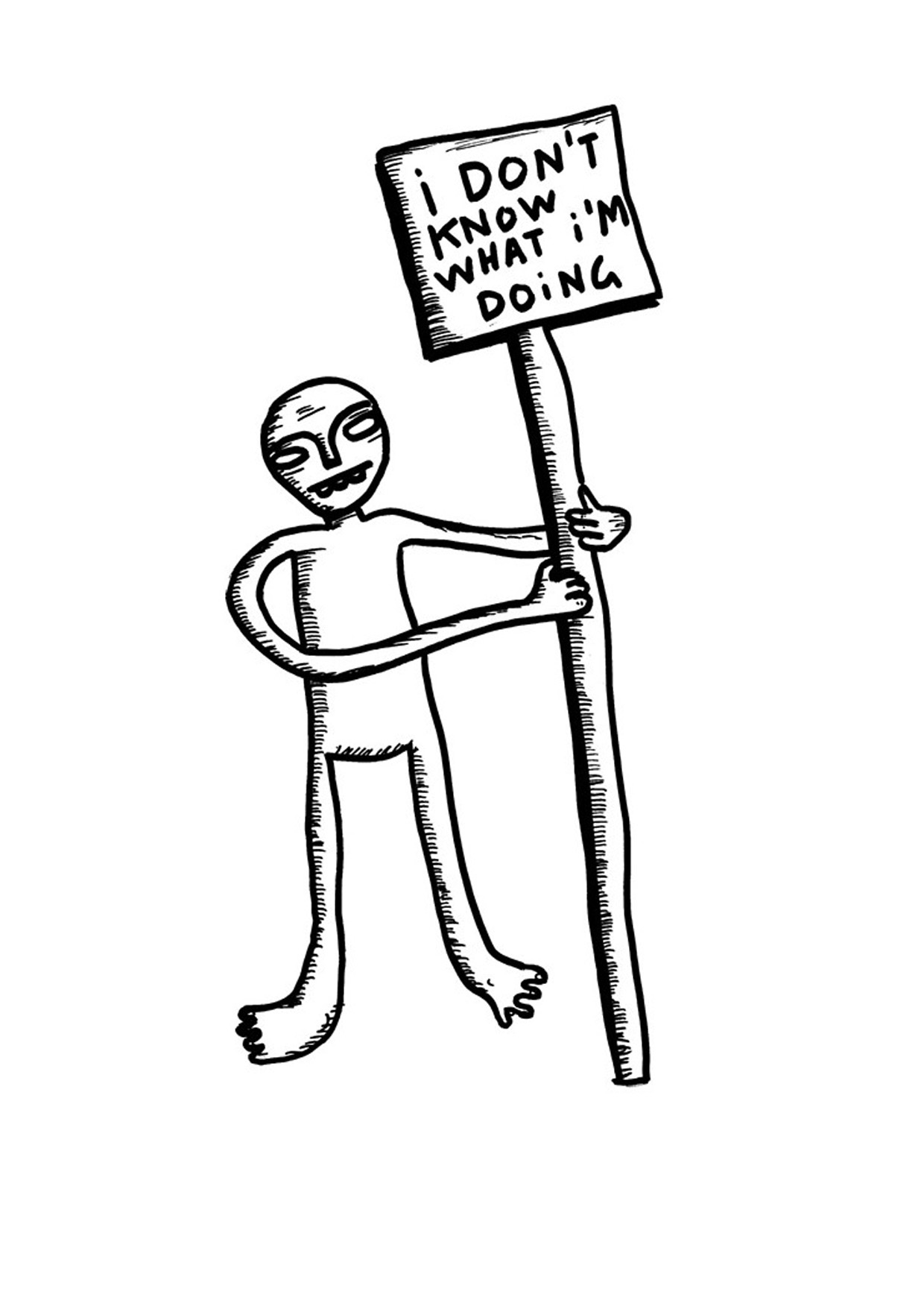 practice required to achieve a level of mastery in any particular subject. I’ve no idea how true or not this is but I find I am more fascinated by the number of hours required to achieve a passionate inexpertise in something. I’m less interested in mastery and more in the 42 sweet spot that allows us to operate right on the edge of our inexpertise. (42 hours being a nominal figure I came up with based on practicing something an hour a day for 6 weeks) A sweet spot where we have enough experience to be able to do something but still not know exactly how it is going to turn out.
practice required to achieve a level of mastery in any particular subject. I’ve no idea how true or not this is but I find I am more fascinated by the number of hours required to achieve a passionate inexpertise in something. I’m less interested in mastery and more in the 42 sweet spot that allows us to operate right on the edge of our inexpertise. (42 hours being a nominal figure I came up with based on practicing something an hour a day for 6 weeks) A sweet spot where we have enough experience to be able to do something but still not know exactly how it is going to turn out.
In May 2018 I did a project called Inexpert. It was a conference designed to be the opposite of TED. To challenge our addiction to the words of experts and quick-fix life-hack solutions. I hired a 100 seater London theatre and invited speakers to give talks on subjects that they were passionate about but had no expertise in. My friend Nick Parker played all of the music for us live on his trumpet that he had been learning for just 6 weeks. This amount of time was enough for Nick (who has expertise in other instruments) to learn how to hold a trumpet, how to blow into one and what notes to aim for but to still have the edgy and exciting experience of not knowing which note will actually emerge from the other end.
I find great joy and creative potential in this sweet spot. But it is a fleeting one that inevitably becomes more and more difficult to experience as our expertise grows. (The story of the Portsmouth Sinfonia is a great example of this) I try to strive to maintain a level of inexpertise in my practice. To not achieve any particular level of mastery that would eliminate the joy of discovering beautiful imperfections or regularly messing stuff up. I recently began making paper cuttings as I realised that my level of expertise with a pen meant I found it more and more difficult for imperfection to naturally emerge in my work.
As I have no expertise in paper cutting the pieces I make are weird, wonky and don’t turn out as I intended them to which, for me make them even more joyful. But I know at some point that my paper cutting skills will develop in a way that means I can no longer achieve this beautiful imperfection and I will have to find other ways of dancing in the sweet spot of expertise that is full of potential. As Shunryu Suziki says
“In the mind of the beginner there are infinite possibilities, in the mind of an expert there are few”.
Not knowing
I’m often asked what is my one tip for being more creative/better able to work with uncertainty/etc. And my answer is always the same – to get really, really good at not knowing. Often the follow up question I am asked is “HOW do I get really, really good at not knowing” to which my honest response is always – “I don’t know.”
For me, not knowing is the most important practice of all. Allowing myself to not know. To experience the excitement and the anxiety of not knowing and to simply allow it to be as it is. It is one of the most difficult yet fertile creative practices because the moment we feel we are getting good at not knowing is the moment we realise we aren’t very good at not knowing. I describe my work as being interested in creativity and the human condition. Creativity being the magnetic pull towards exploring the novel. The human condition being our desire to move away or avoid the unfamiliar. The tension created by these two things seems to be what inhibits creativity as, inevitably, the human condition tends to win.
But not knowing is the foundational backdrop to our existence. All of us, if we zoom in or zoom out enough from the boundaries of our habitual experiencing soon reach a threshold where we realise that none of us really knows what we are doing. This practice feels like it is simply the practice of being human. To get a little closer to experiencing reality as reality is. And for me it sits at the heart of everything on this list. It is the source from which everything else flows.
Get your own list!
I offer this list of stuff as it may be of interest. It may stimulate thoughts or experiments. But it is my list. Convenient abstractions of something that is ever shifting and beyond words for me. In fact, seeing it written down even loses some of its essence for me.
But if any of it stimulates thought or insight or helps in any way then great. If it doesn’t then also great. Either way, none of it is true or real.
I think the most important thing that this blog could suggest to you is if you are interested in deepening your understanding of your own creative practice – be really curious about what is already present for you right now. What are your own unique practices or ways of being that nurture or inhibit your creative, artful practice. And, if it is helpful, create your own unique list of conditions that allow you to find a state of generative flow.
And, at the same time, remember to follow these three simple steps:
1. Hold lists lightly
2. There is no number 2
3. Go back to number 1
Thanks for reading Steve’s blog on creative practice. You can learn more about his work on his website or Instagram page.
If you are interested in attending a future Artful Inquiry you can see all of our upcoming events here: Mayvin's Events Calendar. It is also a great idea to sign up to our mailing list as we send out details of our events and how to sign up as they come up.
